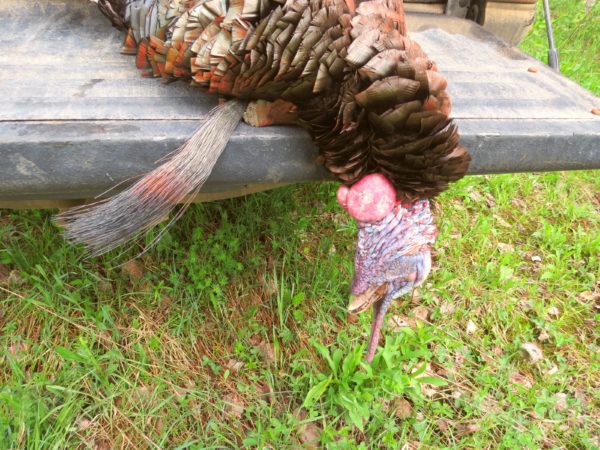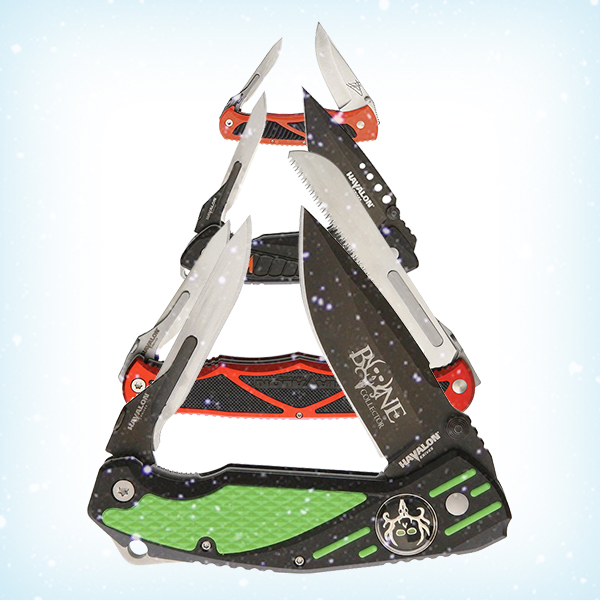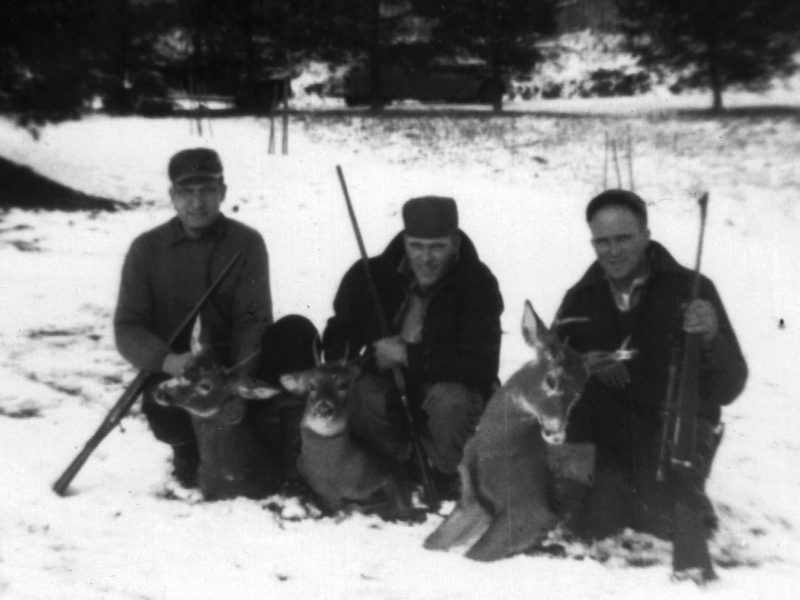Napoleon’s Rule of Turkey Hunting
By Steve Sorensen
When guys wearing camo are talking at the diner, once in a while you hear one of them say “Turkeys don’t do that!” The guy who hunts by that rule isn’t a serious hunter and for sure isn’t killing as many gobblers as he could. Wild turkeys are wildly unpredictable. That’s why I hunt spring gobblers by what I call Napoleon’s Rule (not the French military man, but the star of the 2004 movie Napoleon Dynamite). If you use Napoleon’s Rule, and if you shoot straight, you’ll kill more spring gobblers.
I’ll tell you what Napoleon’s Rule is, but first, here are five things turkeys are not supposed to do, but they do anyway.
1. They’ll change trees after dark.
My buddy Dick was out one evening with high hopes. I had already killed a mature bird six days earlier, and we thought the bird that had been running with that one might be lonesome and more inclined to come to a call. Dick went out one evening with the goal either to tag that bird or to roost him for the morning. The clock ticked toward darkness and the big gobbler was closing the distance, but not quickly enough. As Dick was running out of time he watched the gobbler back off a little and then heard him fly up into a roost tree. Dick waited nearly an hour, then snuck out of there in the blackness of night without bumping the bird off his roost.
The next morning Dick and I were there well before daylight. Dick positioned himself at the same tree he was calling from the night before, and I was 100 yards away across a rocky ravine. Everything was perfect as first light began to seep over the horizon, but when the gobbler gave his first morning announcement, we realized that the old boy had changed trees during the night. He was gobbling in the tree Dick was sitting by.
Dick didn’t kill that bird. I did. And if we hadn’t been hunting together, neither of us would have shot him. The lesson is this. We think of turkeys staying put during the night, with heads tucked safely under their wings. If they leave their perch, we figure they were probably flushed by some danger—but sometimes they move on their own. There’s no explaining that.

This gobbler changed roost trees on his last night in this world. (Photo by Steve Sorensen.)
2. They’ll come in after you leave.
People have places to go and people to meet, so at some point we always need to get out of the woods to take care of business. It’s not that we run out of patience. It’s not that we give up. We just have obligations. One season, at first light, I heard a gobbler on the hillside below. I started calling and he headed my way, but oh, so slowly. I had be at work by 8:00 AM, and he was still gobbling when I left the woods at about 7:30.
The next morning I went back to the same place and sat down to wait for him to gobble. Just as dim light was beginning to brighten the woods, I thought it might be a good idea to answer nature’s call before the gobbler sounded off. As soon as I stood up, I was busted. He flew out of the tree I had been sitting against.
The lesson is that a gobbler might come in long after your pretty hen sounds go silent. We would expect him to find somewhere else to go, some other hen to breed. But no. He must have been monogamous. He wanted that hen, and only that hen. How long will he wait for her? A whole day if he must. Makes me wonder how many times I’ve called gobblers in after I left the woods.
3. They’ll walk away gobbling like there’s no tomorrow.
One evening my brother was fishing and heard a gobbler high on a steep hill. We decided to climb that hill the next morning and when we got to the top that turkey was hotter than the midsummer sun. He carried on a vigorous and lusty conversation, but he wouldn’t budge. He finally decided on a better place to continue that conversation, because he walked away gobbling every few seconds. Between his gobbles, my brother thought he heard another faint gobble.
We thought that if another gobbler was nearby but was intimidated by the first, maybe he’d come in. We set up and sure enough, in a few minutes I heard a soft “cluck” down in a little depression on the hilltop. I raised my Ithaca 37 and he walked in front of the barrel.
We turkey hunters like to find a hot gobbler. We think they’re the easy ones. Turkeys think otherwise. Hot gobblers don’t always come in, but that doesn’t mean a not-so-hot gobbler won’t.

Here I sit, at a perfect set-up, but the 4-hour gobbler won the battle. (Photo by Steve Sorensen.)
4. They’ll talk to you for endless hours.
I was hunting a hot spot back in the ’90s, and it was just a matter of time until I scored. One morning I took off work and had until noon to parlay every bit of patience I could into a successful hunt.
At daylight I had a mature gobbler down a steep hill about 100 yards away. He came off the roost and was coming right to me, but hung up at about 30 yards and wouldn’t crest the hill. He spent the next four hours gobbling at every call I made, but refused to make that last move. In the time I danced with that turkey, four hours passed. I could have gone home, watched “Dances with Wolves,” and come back.
Finally, I heard another gobbler down on the bench from the other direction. I glanced that way and could see him coming 100 yards out. Since visibility was better that direction, I decided my odds were better with him. I made a move to the other side of the tree. When I was halfway there, that four-hour gobbler decided it was the perfect moment to show up. Why did he do that? Maybe the slight sound I made in the leaves did the trick. Maybe he felt competition from the other gobbler. Or maybe, he wanted to make me look like a fool. Yeah, that’s it. But what really matters is that neither turkey got a ride in my truck that day.
5. They’ll leave and then come back.
It’s over. He walked away, so he lives another day. Right? Nope—that’s not always the case. I’ll probably never know why they do this, but it pays to know they do. When a gobbler walks away, the game isn’t necessarily over.
On more than one occasion I have let gobblers leave, and then called them back. One day two mid-morning gobblers came to my soft, sweet, minding-my-own-business purrs and yelps, but they set up their strut zone behind me. That’s where they wanted to be. I couldn’t get them to budge, and I couldn’t move. I decided to go silent for 15 or 20 minutes and when I yelped again, they responded about 100 yards down in the woods.
I quickly moved to the other side of the tree and issued a series of yelps. They gobbled but stayed put until I turned up the heat. I gave them the deadly fighting purr on the Northern Scratchbox call I make and they came barreling in, not wanting to miss whatever was going on. A little while later one of them posed for some photos on the tailgate of my Ford Ranger.

This gobbler came to my set-up, and then left, but charged back in a second time. Then he posed for a photo on the tailgate of my pickup. (Photo by Steve Sorensen.)
These five hunts, and more, have taught me that “Turkeys don’t do that” is a bad rule to hunt by. Sometimes they do do that. They’re like Napoleon Dynamite in the opening scene of the movie of that name when a kid on the school bus said, “What are you going to do today, Napoleon?” His answer? “Whatever I feel like I wanna do! GOSH!” Napoleon’s Rule of turkey hunting is the one to remember: turkeys do whatever they feel like they wanna do.
***

Steve Sorensen has published articles in top magazines across the USA, and won the 2015 “Pinnacle” Award for magazine writing. He also writes an award-winning newspaper column called The Everyday Hunter®, and frequently contributes to the Havalon website. Invite Steve to speak at your next sportsman’s event, and follow him at www.EverydayHunter.com.
2,530 total views, 1 views today















